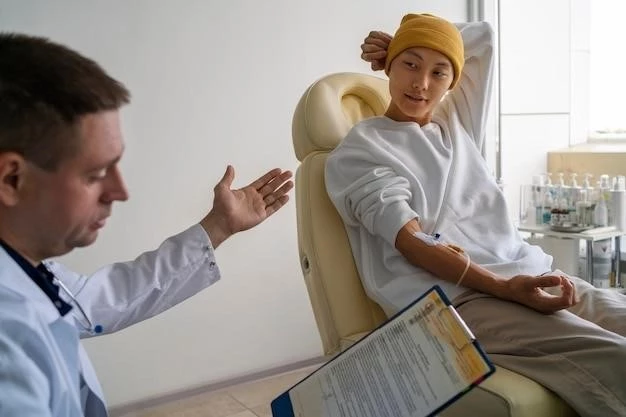Introduction
Rhizomelic syndrome is a rare disorder characterized by abnormal shortening of bones in the upper arms and thighs‚ leading to several distinct clinical features and challenges. Understanding the nature of this condition is crucial for accurate diagnosis and effective management.
Overview of Rhizomelic Syndrome
Rhizomelic syndrome encompasses a group of rare genetic disorders characterized by abnormal shortening of bones in the upper arms and thighs. These conditions lead to skeletal abnormalities‚ distinctive facial features‚ intellectual disabilities‚ and respiratory problems. The disorders within the rhizomelic syndrome spectrum impact various aspects of development and require specialized care to manage the associated challenges.

Clinical Features
Classic Rhizomelic Chondrodysplasia Punctata Type 1 (RCDP1) is defined by skeletal abnormalities‚ cataracts‚ growth restriction‚ and intellectual disability. Rhizomelic syndrome entails distinctive skeletal anomalies and craniofacial features requiring specialized management.
Characteristic Symptoms of Rhizomelic Chondrodysplasia Punctata (RCDP)
Rhizomelic Chondrodysplasia Punctata (RCDP) is characterized by disproportionately short stature predominantly affecting the upper arms and legs (rhizomelia). Additional features can include distinctive facial characteristics‚ intellectual disability‚ craniofacial anomalies‚ joint deformities‚ and respiratory complications. RCDP1 specifically presents with skeletal abnormalities‚ cataracts‚ growth restriction‚ and varying degrees of intellectual impairment‚ highlighting the spectrum of symptoms within this rare condition.
Types of Rhizomelic Syndrome
Rhizomelic syndrome encompasses a range of conditions‚ including Rhizomelic Chondrodysplasia Punctata Type 1 (RCDP1) characterized by identifiable skeletal abnormalities‚ cataracts‚ growth issues‚ and cognitive impairments. Additionally‚ there exist variations of this disorder such as the Urbach type with unique skeletal and facial features.
Rhizomelic Chondrodysplasia Punctata Type 1 (RCDP1)
Rhizomelic Chondrodysplasia Punctata Type 1 (RCDP1) is a peroxisomal disorder with classic and nonclassic forms. Classic RCDP1 is characterized by severe skeletal abnormalities such as rhizomelia‚ punctate calcifications in cartilage‚ growth issues‚ cataracts‚ and varying levels of cognitive impairment. Understanding the distinct features and challenges associated with RCDP1 is crucial for accurate diagnosis and tailored treatment plans.
Genetic Basis
Rhizomelic syndrome‚ notably Rhizomelic Chondrodysplasia Punctata Type 1 (RCDP1)‚ is closely linked to peroxisomal disorders affecting bone development and overall growth. Understanding the genetic underpinnings of these conditions is vital for diagnosis and treatment strategies tailored to individual needs.
Association of Rhizomelic Syndrome with Peroxisomal Disorders
Rhizomelic Chondrodysplasia Punctata (RCDP) is linked to peroxisomal disorders impacting bone development and bodily functions. Understanding the role of peroxisomes in these conditions is essential for diagnosis and management tailored to the specific needs of individuals affected by Rhizomelic syndrome.

Diagnosis and Management
Diagnosis and management of Rhizomelic syndrome involve meticulous evaluation of skeletal abnormalities‚ growth issues‚ facial characteristics‚ and intellectual abilities‚ necessitating a multi-disciplinary approach for tailored treatment plans and ongoing support.
Approaches for Diagnosing and Treating Rhizomelic Syndrome
Diagnosing Rhizomelic Chondrodysplasia Punctata (RCDP) often involves identifying skeletal abnormalities‚ growth issues‚ facial characteristics‚ and intellectual disabilities through clinical evaluations‚ imaging studies‚ genetic testing‚ and metabolic assessments. Treatment approaches may include multidisciplinary care focusing on symptom management‚ physical therapy‚ surgical interventions‚ and specialized support to improve quality of life for individuals affected by Rhizomelic syndrome.
Prognosis
Understanding the long-term outlook for individuals with Rhizomelic syndrome is essential due to the spectrum of symptoms that require ongoing management and support. Each case may vary‚ requiring personalized care to address the unique challenges associated with this rare disorder.
Understanding the Long-Term Outlook for Individuals with Rhizomelic Syndrome
Individuals with Rhizomelic syndrome may experience a range of outcomes depending on the specific subtype and severity of the condition. Long-term management may involve addressing skeletal abnormalities‚ intellectual disabilities‚ growth restrictions‚ and respiratory issues through personalized treatment plans and ongoing support to enhance quality of life.
Research and Awareness
Continued research into Rhizomelic syndrome‚ particularly focused on peroxisomal disorders and genetic mutations‚ is crucial for advancing diagnostic methods and developing targeted treatments. Increased awareness through educational campaigns is essential to ensure early detection and comprehensive care for individuals affected by this complex condition.
Ongoing Studies and Campaigns related to Rhizomelic Syndrome
Current research endeavors aimed at Rhizomelic Chondrodysplasia Punctata (RCDP) focus on understanding genetic mutations‚ peroxisomal disorders‚ and associated metabolic defects to advance diagnostic techniques and develop targeted therapies. Awareness campaigns play a vital role in promoting early detection and comprehensive care for individuals affected by this rare and complex condition.
